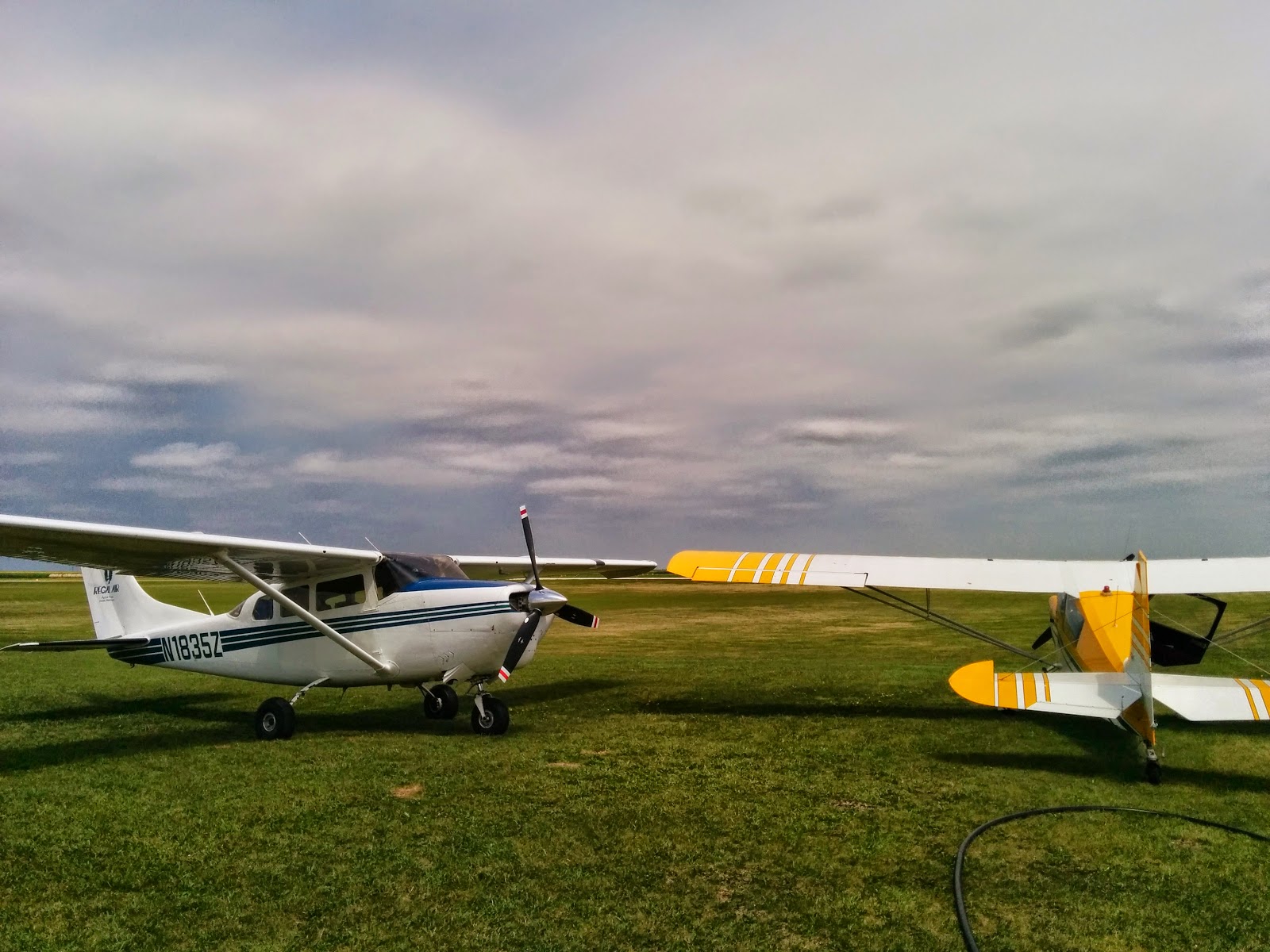Formation
I’ve had four more formation flights. Two were simply photo flights. One was a training flight in preparation for the Cessnas to Oshkosh (C2O) arrival. |
| Cascade Flyers 172 and 182 |
 |
| Sportstar and RV-6 Just north of Seattle |
The second was later in the summer. It was an early morning flight with three mismatched planes. James and Liz were the photographers in the 205, getting pictures of a Sportstar and a much faster RV-6. We got some praise worthy shots over Seattle.
The the third was training for Cessnas to Oshkosh. Eric and I were supposed to be in Olympia fairly early in the morning, but when we got to the airport for departure, there were low clouds over the airport. We filed a flight plan for flying in the clouds and flew on instruments from Paine down to Olympia, including a real instrument landing at Olympia. For all the training it takes to earn an Instrument certificate, it seems rare to actually use it to land.
 |
| Jason got this beauty on a practice flight in preparation for C2O. |
New types and tail-wheel
My efforts to build tail-wheel time have lead me to a friend of a friend with a Bellanca Scout who took me out for a quick flight in his plane (new type 1) this is a fun plane with good ground manners. My efforts also lead me to a second friend of a friend who rents out his Cessna 170A (new type 2). I was able to get in a single flight with him. The flight went well, but later the airplane blew out a cylinder and has been down for repairs ever since. I hope to get back to it soon.One of my coworkers on the east coast bought himself a Piper Archer (designation PA28-181), the 180 horsepower version of the venerable Cherokee. He agreed to let me use it while I am out there for work, but I insisted his insurance company agreed. The insurance company wanted me to get checked out in a PA-28. I went to Regal and got checked out in their Piper Arrow (designation PA28-200R), the retractable version of the same Cherokee (new type 3).
 |
| The Diesel Sportsman |
| Proof of a good time in the RV-6 |
Airventure and New States
Eric and I flew to Oshkosh. Got some really great instrument flying in. We got delayed by weather on both the trip out (stuck at Paine) and the way home (stuck in Wenatchee) by thunder storms over the home airport both times. Even getting out the next morning was pretty rough instrument flying. We hit the clouds as soon as we were off the runway, and clawed our way to 11,000 feet before getting out of the clouds. We had been climbing a long time, we were starting to pick up ice on the wings, and I was about to turn back when Eric said "I see blue above us!" Man, was I glad to hear that. |
| Checking off a state and refueling in Esterville Iowa |
I got a call one afternoon from a former flight instructor offering me a ride in a turbine float plane. I left work early and walked to the seaplane base where I made myself comfortable in the right seat. It was a beautiful flight up, with two smooth water landings. On the route home I guided the massive float plane back to its Seattle base (new type 7).
More New Airplanes and More New States
 |
| Allentown to Bridgeport. JFK, LaGuadia, Teterboro, and Manhattan |
 |
| 28 down 22 to go. (NM should not be included) |